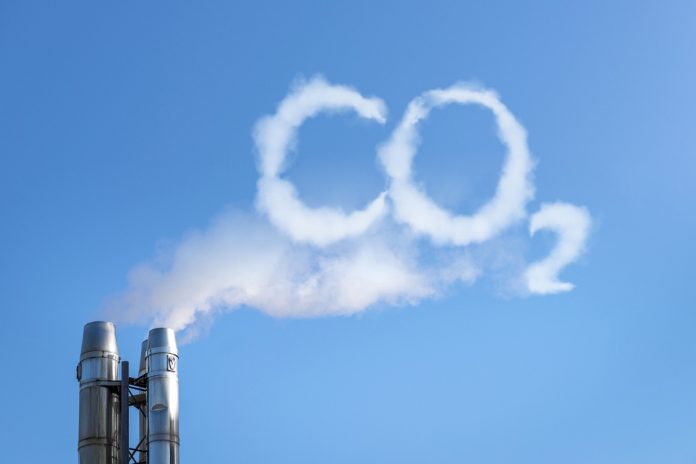While some scientists are trying to tie 2016’s warmer-than-usual winter weather to global warming, the IEA released new data today showing man-made CO2 emissions have remained flat for the last two years. This means energy-related carbon dioxide (CO2) emissions have not gone up since 2013, at least according to new preliminary data released last week by the International Energy Agency (IEA). This is another positive side effect of a warmer winter: less need for energy to heat our homes means less CO2 in the atmosphere.
The autonomous intergovernmental organization IEA believes the flat CO2 emissions can be attributed to the rise of solar, wind, and hydro renewable energies (see video), though that contention is largely in dispute, with more and more solar companies going belly up for not producing enough energy. Some are being investigated for fraudulent activity, with solar-power scamming at an all time high.
“The new figures confirm last year’s surprising but welcome news: we now have seen two straight years of greenhouse gas emissions decoupling from economic growth,” said IEA Executive Director Fatih Birol. The most recent data shows solar and wind make up about five percent of America’s energy needs and hydro makes up another 6 percent. Because wind and solar are both unreliable, many of these systems require back-up systems that rely on fossil fuels. The U.S. Energy Information Administration also shows America’s power comes primarily from coal, natural gas, and nuclear.
Estimates of how much man-made CO2 is released into the atmosphere have it hovering at 32.1 billion tonnes since 2013. Despite that, overall CO2 emissions have risen only two parts per million (PPM) each year since measuring began in the late 1950s, and are hovering at between 400 – 402 ppm. The amount of CO2 that certain scientists claim is causing unprecedented warming point to February as being the hottest month since recordkeeping began.
Keep in mind that when there was no warming for 18-plus years, these same climate scientists said the time-frame was too short to say global warming had stopped. They even had about 70 excuses for why there was no warming. But with only one month at their disposal, they are now pouncing on the so-called anomalous February temps.
Remember, these very same scientists dismissed the global warming hiatus as a blip, said it was far too short, and even tried to make it go away by rewriting the historical land and sea temperature data, much to the chagrin of long-time climate experts. Despite all these efforts, a new study shows there was indeed a global warming hiatus.
And as climate expert Dr. Jennifer Marohasy points out, “While the global satellite temperature data indicates that February 2016 is the hottest month on record, this pertains to a record that only goes back to 1979. If we consider the much longer surface temperature record for many individual locations across Australia and other parts of the world, February 2016 is not that hot.” She also says, “The UAH global temperature record for the lower troposphere which once showed no trend for 18 years, now shows a surge in warming. This warming, however, is neither catastrophic nor outside the bounds of natural variability. And it certainly hasn’t been caused by carbon dioxide.”
So while CO2 emissions produced by man-made apparatuses have remained flat, countries like the U.S. have muscled out CO2-emitting power sources such as coal through unobtainable rules and non-existent technology. Just recently, the Obama administration said it would not be “opening up sections of the Atlantic ocean for offshore drilling,” a “complete flip-flop from the offshore drilling plan it put out in January 2015.”
A new study also found that increased atmospheric methane (a short-lived greenhouse gas) was coming from agriculture practices, and not from fossil fuel sources such as fracking, despite conflicting statements by the EPA. Long-term temperature series reconstructed from ice core samples (and deep-sea sediments) show warming of the Earth is followed by increased levels of CO2 by 200 to 800 years, and not the other way around.
The IEA also says that the “two largest emitters, China and the United States, both registered a decline in energy-related CO2 in 2015.” Emissions in China dropped by 1.5 percent as coal use has dropped for the last two years. The IEA says that in 2015, 69 percent of Chinese electricity comes from coal-fired power plants, down slightly from 2014. This coincides with China’s recent investments and advancements in renewables, most of which are hydroelectric.
Aside from holding the “third-largest coal reserves in the world,” China also has “massive hydroelectric resources.” China is also building one new coal-fired power plant every 7 to 10 days, with each having a life expectancy of 30 years. Japan, still gun shy over it’s recent tsunami-related nuclear catastrophes, plans to build 43 coal-fired power plants in the coming years. China has said it will try to start decarbonizing its society after 2020, long after President Obama has left office.
And because this winter has been unusually warm due to the strong El Niño, stockpiles of coal are at an all-time high. It also broke the aforementioned global warming hiatus, that up until this El Niño year, had been humming along at nearly 18 years of no statistical warming. Dr. Jennifer Marohasy also writes that “El Niño events are not caused by carbon dioxide. They are natural events which manifest as changes in ocean and atmospheric circulation patterns across the Pacific Ocean.”
Not all news is bad, though. The super strong El Niño brought much-needed rains to much of California, with reservoirs in parts of the state at or over capacity.















